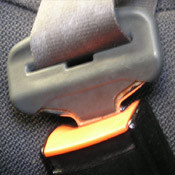7 Methods to Save on Car Insurance in Nebraska City, NE

Searching for cheap Nebraska City car insurance over the internet may be rather challenging for consumers not familiar with price shopping online. When there are so many companies in the marketplace, how can you even start to compare them all to find the lowest rates?
If you have insurance now or are looking for a new policy, you will benefit by learning to shop for the lowest rates and still get good coverage. This information will help you learn the best way to quote coverages and some tricks to saving. Nebraska consumers just need to know the proper methods to compare rates on the web.
More discounts equal less premium
The price of auto insurance can be rather high, but you may find discounts to help offset the cost. Some discounts apply automatically at the time of quoting, but less common discounts must be inquired about prior to receiving the credit. If you’re not getting every credit available, you are throwing money away.
- Student Driver Training – Cut your cost by having your teen driver complete a driver education course if it’s offered in school.
- 55 and Retired – If you’re over the age of 55, you may qualify for a small decrease in premiums.
- Pay Upfront and Save – By paying your policy upfront instead of monthly or quarterly installments you could save 5% or more.
- Defensive Driving Course – Successfully completing a course in driver safety can save you 5% or more if you qualify.
- Early Switch Discount – Some insurance companies reward drivers for signing up prior to your current policy expiring. It’s a savings of about 10%.
- Paperwork-free – A few companies give back up to $50 for buying a policy and signing up over the internet.
- Theft Prevention Discount – Anti-theft and alarm systems help deter theft and will save you 10% or more.
A little note about advertised discounts, some credits don’t apply to the entire cost. Some only apply to the price of certain insurance coverages like medical payments or collision. So even though it sounds like it’s possible to get free car insurance, car insurance companies aren’t that generous. Any qualifying discounts will reduce the amount you have to pay.
To choose insurance companies offering car insurance discounts in Nebraska City, click this link.
Do you really save 40% when you switch?
Nebraska drivers can’t ignore all the ads for car insurance savings from the likes of Progressive, Allstate and GEICO. They all seem to have a common claim that you can save if you switch your coverage to them.
How can each company say the same thing?
All the different companies are able to cherry pick for the type of driver they prefer to insure. An example of a desirable insured could be over the age of 40, has no driving citations, and has great credit. A customer getting a price quote who meets those qualifications receives the best rates and as a result will probably save when switching.
Potential insureds who don’t meet this ideal profile will have to pay higher premiums which usually ends up with business going elsewhere. The ad wording is “customers who switch” not “everybody who quotes” save money. That’s why companies can make the claims of big savings.
Because of the profiling, drivers must compare as many rates as you can. It’s just too difficult to predict which company will have the lowest rates.
More information is available on the Nebraska Department of Insurance website through this link. Nebraska drivers can find disaster information, find a variety of consumer forms, read enforcement actions against agents and companies, and download brochures.
Additional helpful sites include this link for Nebraska coverage information and this link where you can make Nebraska City car insurance comparisons.
What car insurance coverages do you need?
Understanding the coverages of your car insurance policy can help you determine the best coverages for your vehicles. Car insurance terms can be difficult to understand and reading a policy is terribly boring.
Comprehensive or Other Than Collision
This coverage pays for damage that is not covered by collision coverage. You first have to pay a deductible then your comprehensive coverage will pay.
Comprehensive can pay for things such as damage from flooding, a broken windshield, damage from getting keyed, rock chips in glass and hitting a deer. The maximum amount a car insurance company will pay at claim time is the ACV or actual cash value, so if your deductible is as high as the vehicle’s value consider removing comprehensive coverage.
Medical costs insurance
Coverage for medical payments and/or PIP kick in for short-term medical expenses like surgery, pain medications, ambulance fees and EMT expenses. They are used to fill the gap from your health insurance plan or if there is no health insurance coverage. They cover both the driver and occupants as well as getting struck while a pedestrian. PIP coverage is not available in all states but it provides additional coverages not offered by medical payments coverage
Auto liability insurance
This will cover injuries or damage you cause to other people or property that is your fault. It protects you against other people’s claims, and does not provide coverage for damage sustained by your vehicle in an accident.
Coverage consists of three different limits, per person bodily injury, per accident bodily injury, and a property damage limit. You commonly see liability limits of 50/100/50 that means you have a $50,000 limit per person for injuries, a total of $100,000 of bodily injury coverage per accident, and a total limit of $50,000 for damage to vehicles and property. Alternatively, you may have one number which is a combined single limit which combines the three limits into one amount and claims can be made without the split limit restrictions.
Liability insurance covers claims such as loss of income, repair bills for other people’s vehicles and repair costs for stationary objects. The amount of liability coverage you purchase is up to you, but consider buying higher limits if possible. Nebraska requires minimum liability limits of 25,000/50,000/25,000 but you should consider buying higher limits.
Collision coverage
This pays to fix your vehicle from damage caused by collision with a stationary object or other vehicle. You will need to pay your deductible and the rest of the damage will be paid by collision coverage.
Collision coverage protects against claims like crashing into a ditch, sustaining damage from a pot hole and colliding with a tree. Paying for collision coverage can be pricey, so consider dropping it from older vehicles. Drivers also have the option to bump up the deductible to bring the cost down.
UM/UIM Coverage
This coverage gives you protection from other motorists when they either are underinsured or have no liability coverage at all. Covered claims include injuries to you and your family as well as your vehicle’s damage.
Because many people only purchase the least amount of liability that is required (Nebraska limits are 25/50/25), their limits can quickly be used up. That’s why carrying high Uninsured/Underinsured Motorist coverage is a good idea. Normally these coverages are identical to your policy’s liability coverage.
Shop smart and save
Insureds switch companies for any number of reasons including poor customer service, questionable increases in premium, denial of a claim or even an unsatisfactory settlement offer. It doesn’t matter why you want to switch switching car insurance companies can be easy and end up saving you some money.
Discount car insurance can be found from both online companies and with local Nebraska City insurance agents, so you should be comparing quotes from both to have the best selection. Some companies do not offer the ability to get a quote online and usually these regional insurance providers provide coverage only through local independent agents.
When you buy insurance online, you should never skimp on coverage in order to save money. There have been many situations where an insured dropped full coverage to discover at claim time they didn’t purchase enough coverage. Your strategy should be to purchase a proper amount of coverage for the lowest price, not the least amount of coverage.


